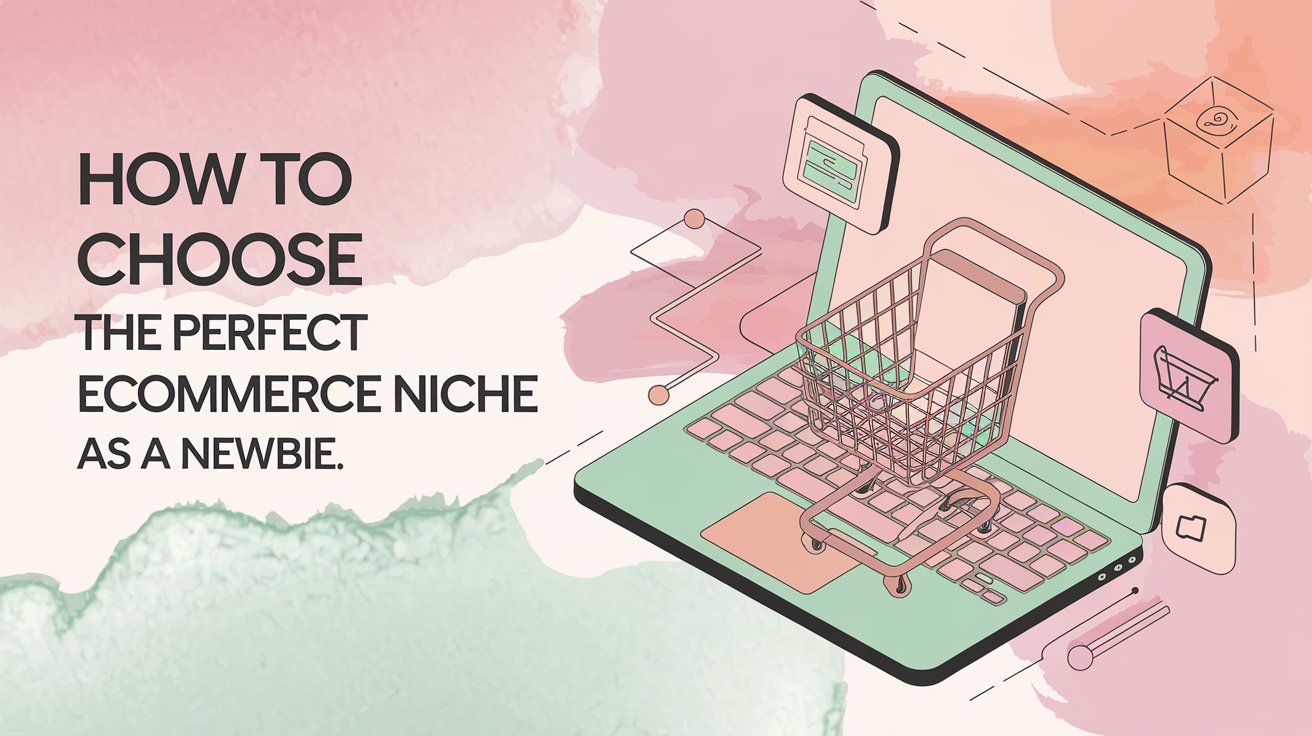Choosing the perfect ecommerce niche can feel overwhelming, especially if you’re new to the world of online business. With countless options available, how do you know which niche is right for you? In this guide, we’ll break down the steps to help you confidently select a profitable and enjoyable niche for your ecommerce venture.
What is an Ecommerce Niche?

An ecommerce niche is a specific segment of the market that caters to a targeted audience. Instead of trying to sell everything to everyone, focusing on a niche allows you to tailor your products, marketing, and branding to meet the unique needs of a particular group.
Examples of Ecommerce Niches:
- Sustainable fashion for women
- Home office accessories for remote workers
- Fitness equipment for small spaces
Picture This: Imagine a shop specializing in beautifully designed, sustainable fashion that attracts eco-conscious buyers, or a store offering ergonomic home office solutions for remote workers. These niches focus on solving specific problems, creating a loyal customer base.
Why Choosing the Right Niche Matters
Selecting the right niche is crucial for several reasons:
- Competition: A well-defined niche reduces direct competition, making it easier to stand out.
- Marketing: Niche audiences are more targeted, simplifying your marketing efforts.
- Profitability: A good niche has a loyal audience willing to pay for solutions.
- Sustainability: Selling products you’re passionate about keeps you motivated in the long run.
Picture This: You’ve narrowed down your niche to a specific audience, such as busy parents looking for quick and effective meal prep tools. Your marketing and product selection become laser-focused, leading to increased sales and customer loyalty.
Steps to Choose the Perfect Ecommerce Niche
1. Identify Your Interests and Passions
Starting with something you care about or enjoy makes the journey more rewarding. Think about:
- Hobbies you love (e.g., gardening, photography, or fitness)
- Topics you’re curious about or willing to learn
- Problems you’ve experienced that need solutions
Pro Tip: Use your passion as a foundation but balance it with market demand.
Picture This: You’re passionate about fitness, so you decide to create a niche store offering compact workout equipment for small spaces. Your enthusiasm translates into a unique and engaging customer experience.
2. Research Market Demand
No matter how much you love a niche, it needs to have a market. Here’s how to validate demand:
- Google Trends: Check search volume trends to see if interest is growing.
- Keyword Research Tools: Use tools like KeySearch to uncover high-volume, low-competition keywords.
- Competitor Analysis: Identify other businesses in the niche and analyze their success.
Example: If you’re interested in sustainable living, research terms like “eco-friendly home products” or “zero waste kits.”
Picture This: You discover a growing interest in zero-waste products through Google Trends and realize there’s a market gap for reusable kitchen essentials. This insight helps shape your niche.
3. Evaluate the Competition
Competition isn’t always bad; it shows there’s demand. However, you’ll want to find ways to differentiate yourself. Look at:
- The products competitors offer
- Their pricing strategies
- Customer reviews to identify gaps or unmet needs
Picture This: While researching competitors, you notice customers complaining about slow shipping times. You decide to focus on faster delivery, making your store stand out.
4. Assess Profitability
Your niche should not only attract buyers but also generate profit. Consider:
- Product Costs: Can you source or create products affordably?
- Profit Margins: Is there enough markup potential?
- Recurring Revenue: Are there opportunities for repeat purchases?
Picture This: You’ve found a supplier for trendy tech accessories at a low cost. With strong profit margins, you’re set to build a lucrative business.
5. Define Your Target Audience
Understanding who your ideal customers are will guide your product selection and marketing. Ask yourself:
- What are their demographics (age, gender, location)?
- What problems do they face that your products can solve?
- Where do they spend their time online?
Picture This: Your target audience is young professionals who value convenience. You tailor your store’s branding and ads to reflect their fast-paced lifestyle, increasing engagement.
6. Test Your Idea
Before fully committing, test your niche idea:
- Start with a small product launch or dropshipping model.
- Gather feedback from friends, family, or online communities.
- Run targeted ads to gauge interest.
Picture This: You launch a small Facebook ad campaign for your product idea. The positive feedback confirms you’re on the right track, giving you the confidence to scale.
Examples of Beginner-Friendly Ecommerce Niches
Here are some niches that are great for beginners:
- Pet Products: Unique items for pet owners, such as personalized pet accessories.
- Health and Wellness: Products like yoga mats, essential oils, or portable fitness gear.
- Home Organization: Affordable storage solutions for small spaces.
- Tech Accessories: Phone cases, laptop stands, or cable organizers.
- Eco-Friendly Products: Reusable bags, water bottles, or bamboo utensils.
Picture This: Imagine starting a store selling personalized pet collars. Pet owners rave about your unique designs, and word-of-mouth spreads, growing your business.
Start your e-commerce business for FREE with Shopify, and when your trial ends, you can start for only $1 the first month. Sign up for a free trial (3 days) and your first month is $1. Then earn 1% for every sale as credits to use on your Shopify subscription. Make sales and have Shopify pay for itself! Terms apply
Common Mistakes to Avoid When Choosing a Niche
- Ignoring Market Research: Don’t pick a niche solely based on passion; validate demand.
- Going Too Broad: Focus on a specific audience to stand out.
- Chasing Trends: Avoid overly trendy niches that may fade quickly.
- Underestimating Costs: Factor in expenses like product sourcing, shipping, and marketing.
- Skipping the Testing Phase: Always validate your idea with real-world feedback.
Picture This: You rush into a trendy niche without research, only to find out demand drops after a few months. Learning from this, you pivot to a niche with long-term potential.
Final Thoughts
Choosing the perfect ecommerce niche doesn’t have to be complicated. By combining your interests with thorough research and a focus on profitability, you can find a niche that’s both enjoyable and lucrative. Remember, starting small and testing your ideas is key to building a sustainable business.
Are you ready to choose your niche and start your ecommerce journey? Let us know in the comments below!









